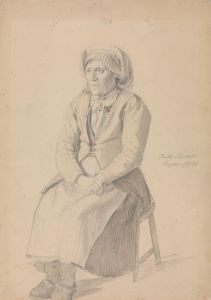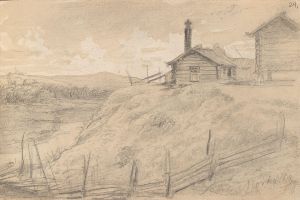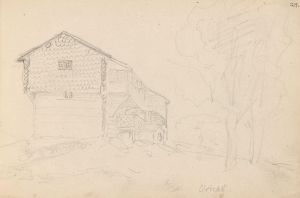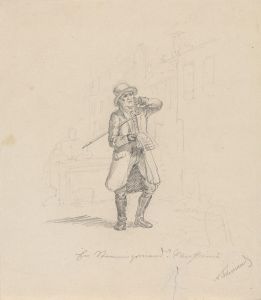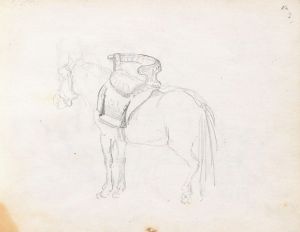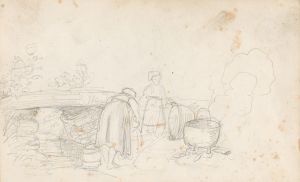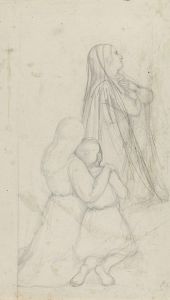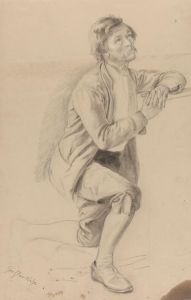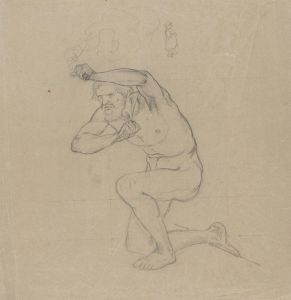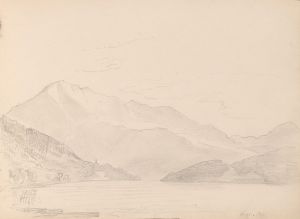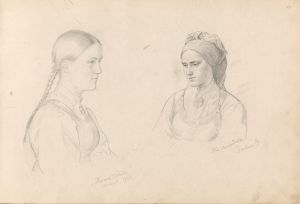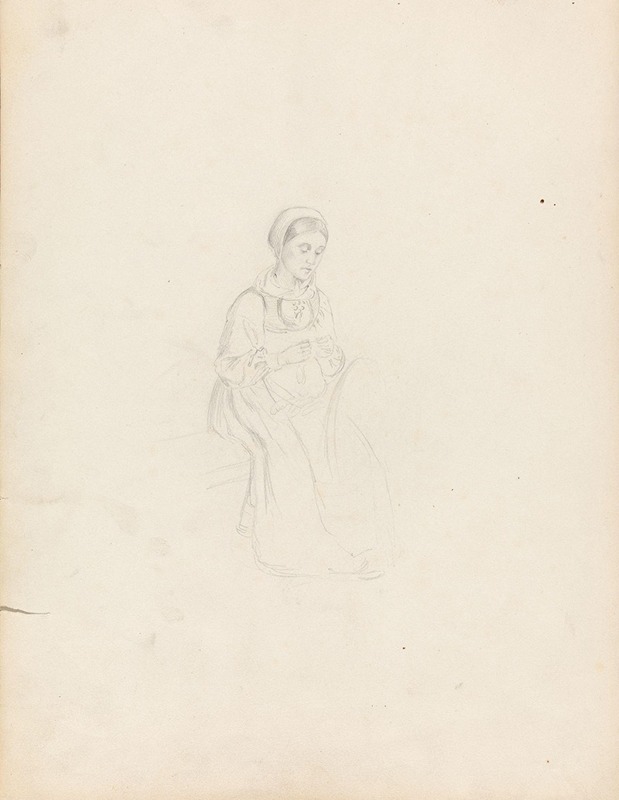
Jente som spinner, Numedal
A hand-painted replica of Adolph Tidemand’s masterpiece Jente som spinner, Numedal, meticulously crafted by professional artists to capture the true essence of the original. Each piece is created with museum-quality canvas and rare mineral pigments, carefully painted by experienced artists with delicate brushstrokes and rich, layered colors to perfectly recreate the texture of the original artwork. Unlike machine-printed reproductions, this hand-painted version brings the painting to life, infused with the artist’s emotions and skill in every stroke. Whether for personal collection or home decoration, it instantly elevates the artistic atmosphere of any space.
Adolph Tidemand was a prominent Norwegian painter in the 19th century, known for his detailed and evocative portrayals of Norwegian rural life and traditions. One of his notable works is "Jente som spinner, Numedal," which translates to "Girl Spinning, Numedal." This painting is an exemplary piece that reflects Tidemand's dedication to capturing the essence of Norwegian culture and the everyday life of its people.
"Jente som spinner, Numedal" is a part of Tidemand's extensive exploration of rural Norway, where he sought to document and preserve the traditional customs and lifestyles that were rapidly changing during his time. The painting depicts a young girl engaged in the act of spinning, a common domestic activity in rural Norwegian communities. This scene is set in Numedal, a valley in Norway known for its rich cultural heritage and picturesque landscapes.
Tidemand's work is characterized by its attention to detail and the ability to convey the simplicity and dignity of rural life. In "Jente som spinner, Numedal," he captures the serene concentration of the girl as she spins, highlighting the importance of this task in the daily life of rural Norwegians. The painting reflects Tidemand's interest in the role of women in traditional society, as they were often responsible for tasks such as spinning, which were essential for the household economy.
The setting of the painting is also significant. Numedal, with its traditional wooden architecture and scenic beauty, provides a backdrop that enhances the cultural context of the scene. Tidemand often traveled to various regions of Norway, including Numedal, to gather inspiration and material for his work. His travels allowed him to observe firsthand the customs and lifestyles of different communities, which he then meticulously documented in his paintings.
Adolph Tidemand was part of the National Romantic movement, which sought to celebrate and preserve national identity through art. His paintings, including "Jente som spinner, Numedal," played a crucial role in shaping the Norwegian national consciousness during a time when the country was seeking to assert its cultural identity. Through his art, Tidemand contributed to a greater appreciation and understanding of Norway's rural heritage and traditions.
"Jente som spinner, Numedal" is not only a representation of a specific cultural practice but also a testament to Tidemand's skill as a painter. His use of color, light, and composition brings the scene to life, inviting viewers to step into the world he so carefully depicted. The painting is a valuable historical document, offering insights into the daily lives of people in 19th-century Norway and the cultural significance of their traditions.
Today, Adolph Tidemand's works, including "Jente som spinner, Numedal," are celebrated for their artistic merit and historical value. They continue to be studied and appreciated for their contribution to Norwegian art and cultural history. Tidemand's paintings remain an important part of Norway's artistic heritage, serving as a window into the past and a reminder of the enduring importance of cultural preservation.





